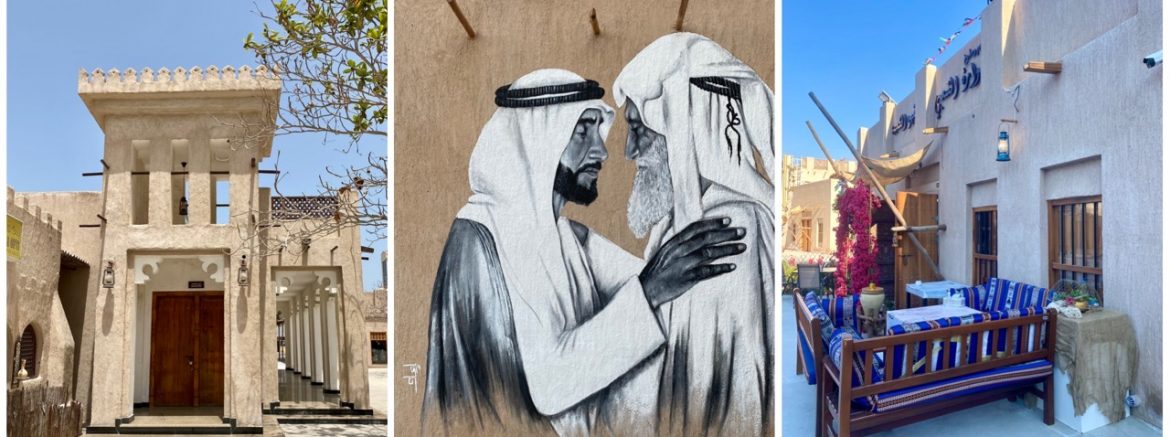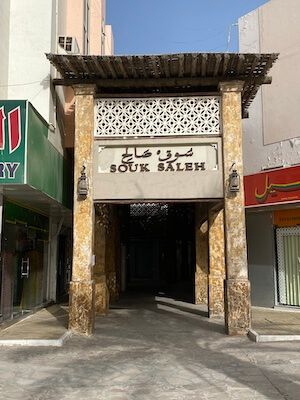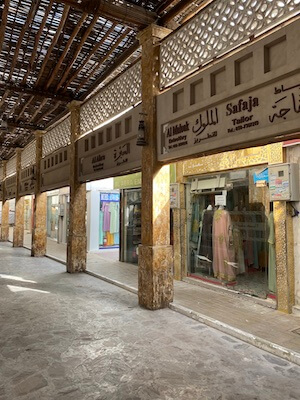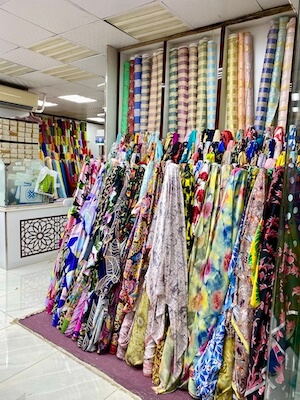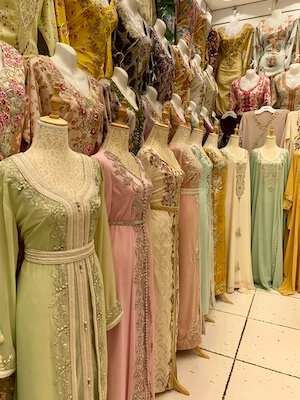Ajman Heritage District is a lovely, tranquil place to wander around, admire the murals of scenes of traditional life, explore Ajman Fort and stop off for tea, Emirati breakfast or even Viking fine dining!
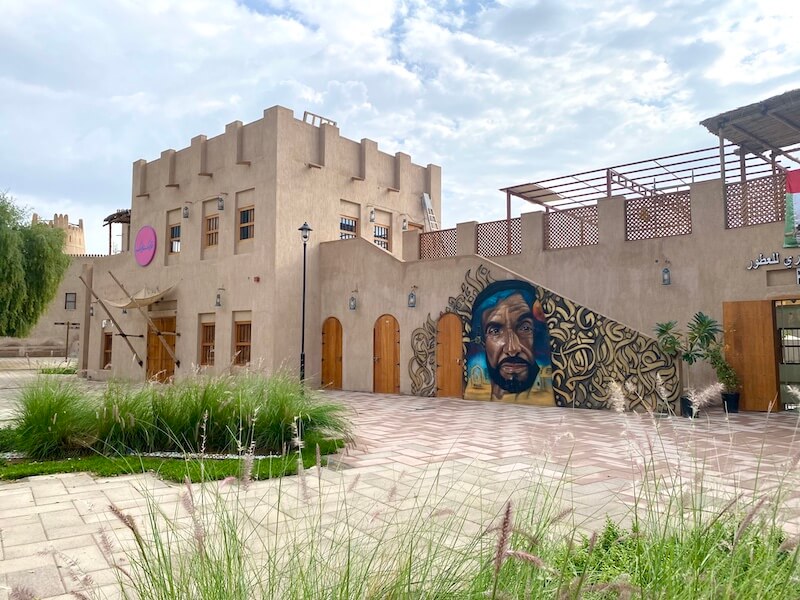
Disclosure: When you make a booking or purchase through links on this site, I may earn commission from partners at no extra cost to you. This helps me to build the site and bring you more great posts!
Ajman Heritage District
Ajman Heritage District is next to Ajman Fort (which is also the Museum) and is made up of streets named after poets. The traditional buildings house shops selling old coins, stamps, perfume, etc, as well as coffee shops and tea rooms. It’s also a great spot just to sit and watch the world go by.
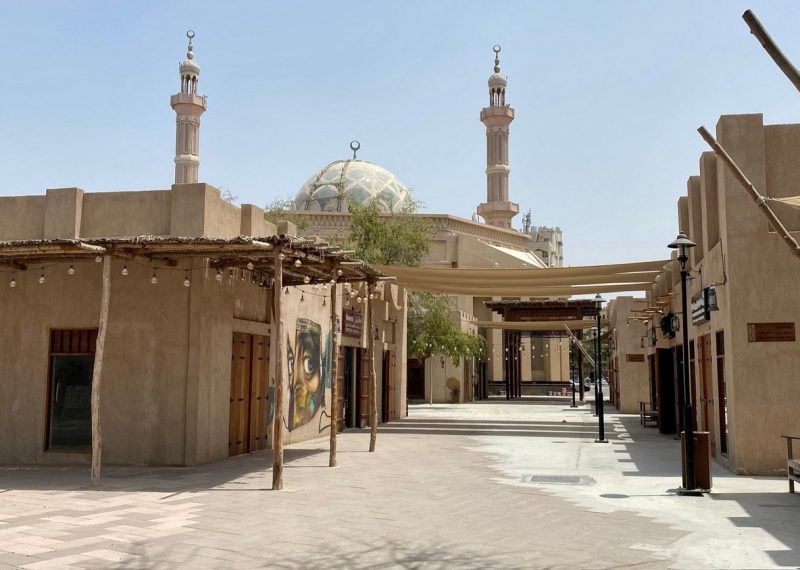
The most striking feature though is the gallery of murals depicting scenes of traditional Emirati life and the history of Ajman.
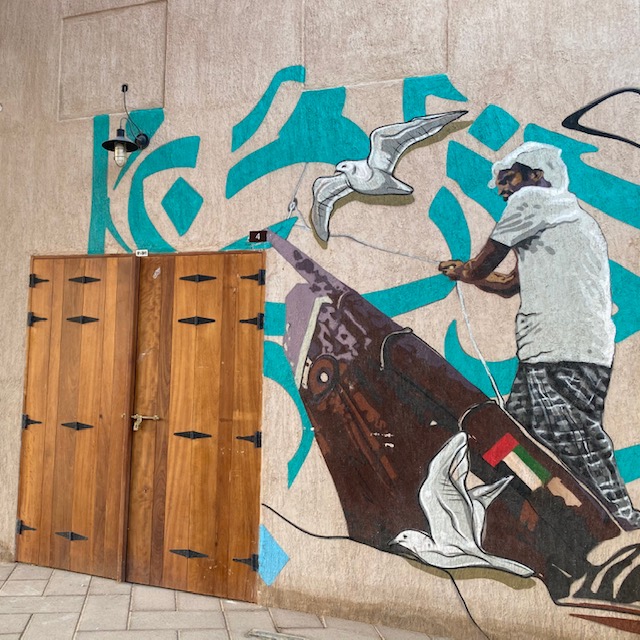
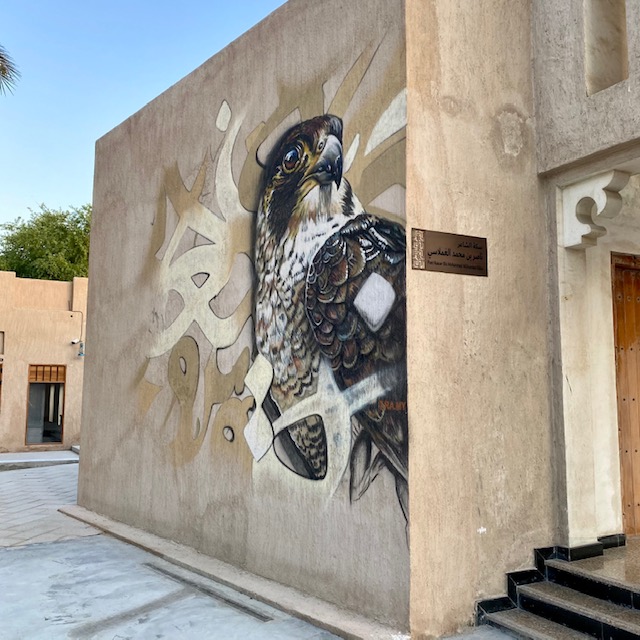
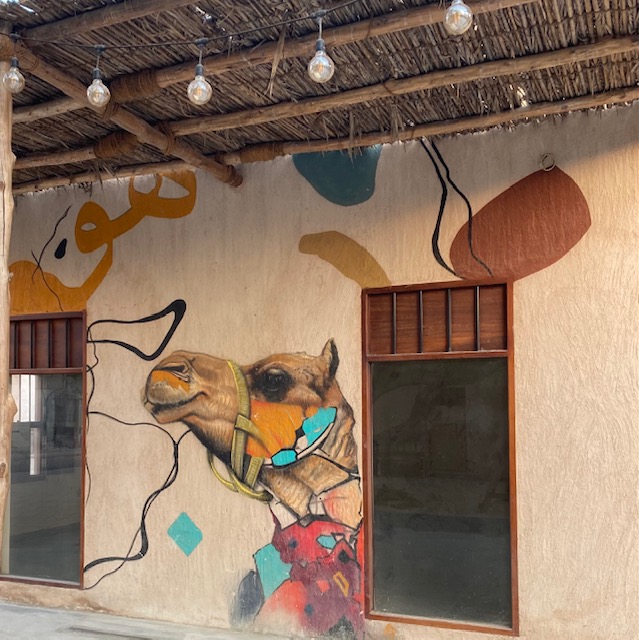
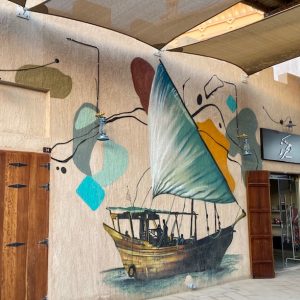
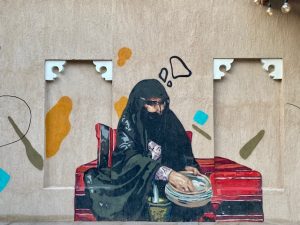
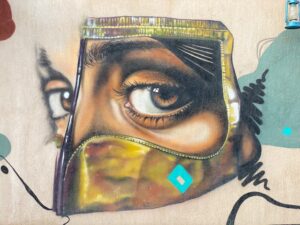

The centrepiece in front of Ajman Fort is the sculpture named Al Mizan inspired by Arabic calligraphy and symbolising culture and generosity. The sculpture was created by internationally renowned French-Tunisian artist El Seed. El Seed also has an art piece on a building in Ajman and also one in Sharjah.

Ajman Wall
The original wall that protected the town from attack many years ago was destroyed as the town grew and little importance given to what remained. However, this new wall has been constructed to remind people of the history. Words by Emirati poet Saif Al Marri adorn the wall on one side and drawings on the other.
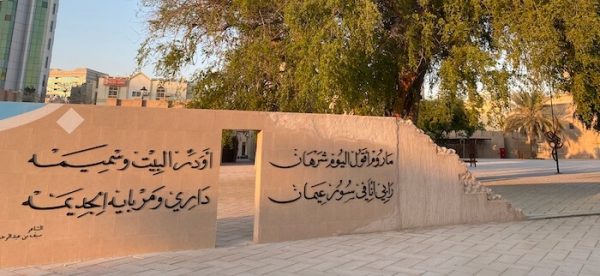
Ajman Food Destination
Apart from being home to lots of wonderful murals, Ajman Heritage District is fast becoming a restaurant and cafe destination.
Qdeemk wa Ndeemk, which used to be on Ajman Corniche serves delicious Emirati cuisine along with other food in a unique environment.
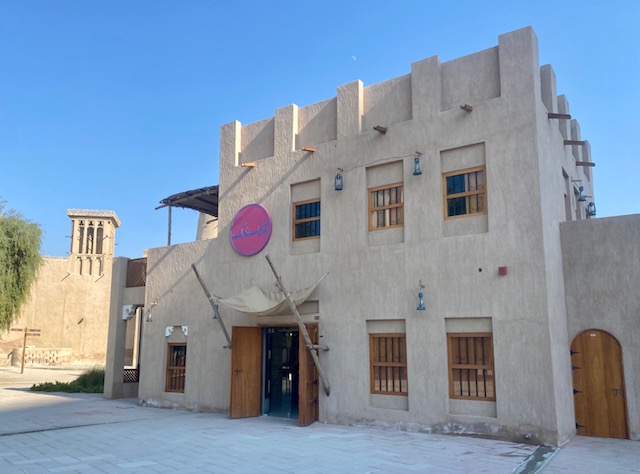
Liwara Sha’abi also sells traditional food in traditional decor along with other delicacies made by local women in the community that you can buy and take home your own little bit of Ajman heritage.
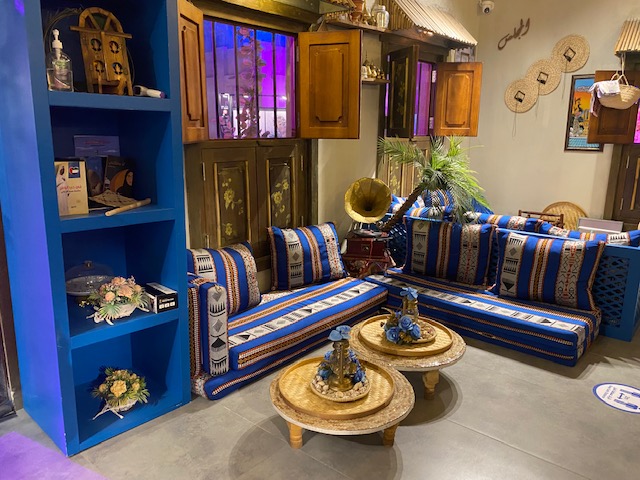
Turath is soon to open and the Viking Restaurant is a fine dining destination serving what they say is food that would have been eaten by the Vikings and offers a whole experience rather than just food. Reservation is required and it open evenings only.
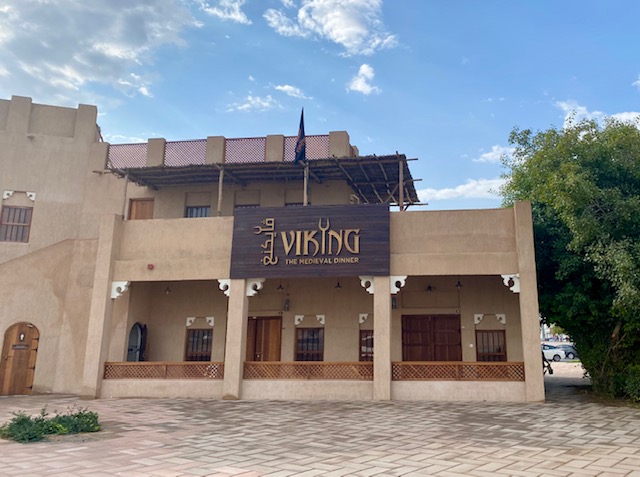
There are also several coffee and tea shops such as Veiled in Black and Tea Lab.
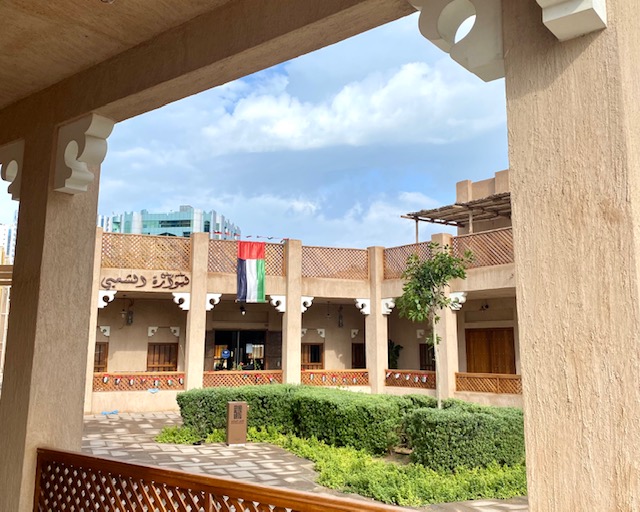
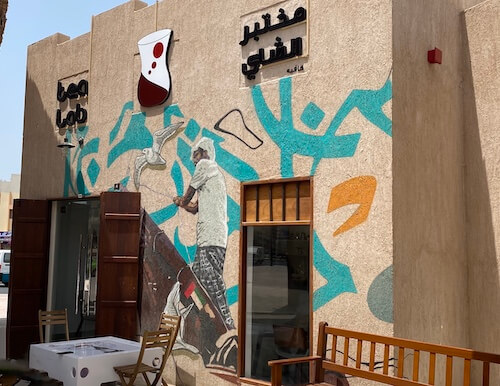
Souqs at Ajman Heritage District
The district now also has a array of shops selling perfumes, collectors’ items and traditional clothing in Souq al Hosn.
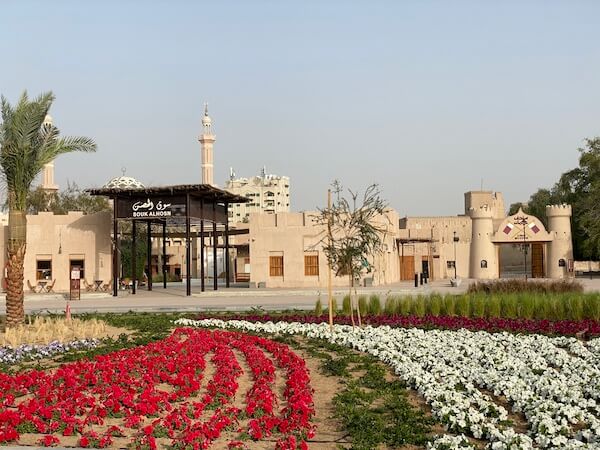
Across the road you can find Souq Saleh which is just the place to go if you’d like to make traditional ladies’ clothing.
You can buy material there and have them made and hand embroidered or embellished by the tailors in the souq. There are lots of styles for you to choose from. I like to go there as I can get everythign done in one place. They also sell ready traditional gowns which just need to be cut and tailored to your size.
Events at Ajman Fort and Heritage District
Events are occasionally held at the Heritage District such as Al Murabbaa Arts Fesitval and heritage festivals.
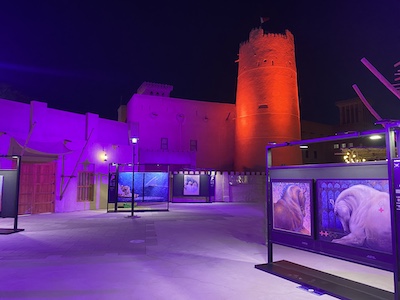
Ajman Fort
The museum in Ajman Fort Museum has recently been redone with a wonderful new exhibition on the history of Ajman.
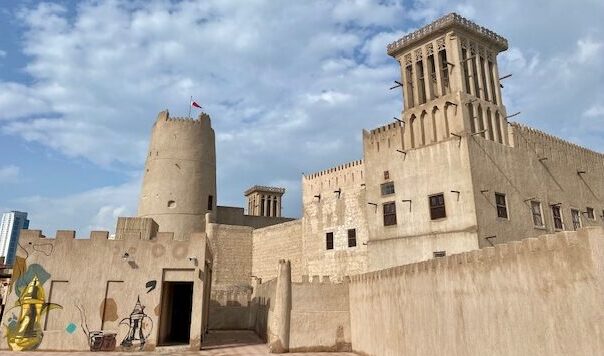
History of Ajman
You might also like to visit the new Masfout Museum in the Ajmani enclave of Masfout to learn more of the history of Ajman.

What else to visit nearby –Ajman Museum, Al Marsa, Ajman Corniche, Al Zorah
If you liked this, you might like these other pages:
- Sharjah Art Area
- Heart of Sharjah
- The Rain Room
- National Museum of Ras al Khaimah
- What to do in Ras al Khaimah
- Places to visit in Masfoot, enclave of Ajman
- Places to visit in Kalba
- Places to visit in Khor Fakkan
- Places to visit in Al Ain
- 50 Places to Visit in the UAE
This post was first published on 2 June 2021 and last updated on 23 September 2023.
- Follow on Instagram or Facebook for regular photos, tips and snippets of cultural and historical information too.
- Sign up for the Glimpses of the UAE Newsletter
- Take me to the Glimpses of the UAE Map to find nearby locations and plan my trip.
- See some of my hiking trails, walks and off-road trips on Wikiloc.
- To see my Oman trips, visit In Scotterati Footsteps.
